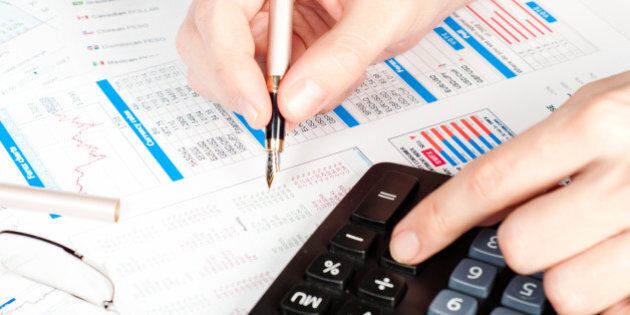
No matter how your academic career ends, there comes a point when you join the workforce and (hopefully) start earning a regular paycheque. Earning income means you have the privilege of paying income tax. It may not be your first thought, but tax planning is an important part of a financial plan.
If your employer withholds tax, CPP and EI, you will be asked to complete a TD1 Form to calculate how much to take off your paycheques. If you are just starting out, the form will probably be fairly basic, since you likely will not have any children to claim. But if you stay with the same employer and your life changes, you should update your TD1 Form. Although it feels nice to get a tax refund, this is actually an interest-free loan to the government. You are simply being returned the money you overpaid.
Tax brackets
Every Canadian is allowed to earn a minimum amount before paying federal income tax. This is called the basic personal amount and for 2013 it is $11,038. Earn more than this and you start paying tax. But you do not pay the same amount of tax on every dollar of income. There are tax brackets. As your income increases, the amount of tax you pay on it will rise.
If you earn less than $43,561 in 2013, you will pay 15 per cent federal income tax minus your basic personal amount. For the income you earn from $43,562 to $87,123, you will pay 22 per cent income tax. For the income from $87,124 to $135,054, you will pay 26 per cent income tax. And if you earned more than $135,054, then you are paying 29 per cent income tax. And there will be provincial tax as well.
If you are just starting your first job, you are probably not worried about hitting the 29 per cent tax bracket, however it can be useful to know the cut offs. For example, if you earned $46,000 in 2013, a $3,000 contribution to your Registered Retirement Savings Plan (RRSP) would bring all your income to the 15 per cent bracket. This is why tax planning should happen more often than on April 30.
Check out some of the weirdest U.S. tax laws:
Story continues after slideshow
What you can claim
In most cases, you cannot claim employment expenses unless they are part of your job contract. And commuting costs to and from work are not eligible. If you can claim employment expenses, you need a signed T2200 Form - Declaration of Conditions of Employment from your employer to make the claim. If you are a tradesperson or apprentice mechanic, you may be able to claim a portion of your tools for a tax credit. You will also need a T2200 Form and the receipts for your qualifying tools.
If your employer deducts money for your healthcare plan, the premiums can be claimed as a medical expense. Also, if your healthcare plan has deductibles or only covers a percentage of trips to the dentist, the amounts you have to pay are also medical expenses.
Whether or not medical expenses bring tax savings depends on your income, so the more receipts you have, the more likely you will be able to claim it. You cannot claim multiple years of medical expenses but you can claim your best 12 months, as long as one of the months end in the tax year. So you could claim from August 2011 to July 2012 on your 2012 tax return if that gives you the most expenses. This could be useful if you are getting some major dental work done and it is spread out over a year.
And if your employer raises funds for a charity, it may be best to have the donation deducted from your paycheque rather than buying goods at the bake sale. It may not taste as good but you will get a charitable donation receipt for your contributions.
If you are going to claim donations, make sure you have $200 or more. The first $200 in donation only yields a 15 per cent credit but anything greater than $200 is 29 per cent plus provincial tax savings. You can claim up to six years of donation receipts on one return, so it may be worth waiting a year.
Leftover student credits
You may have accumulated unused tuition and education credits from your school years, and if so the amount will be included on your Notice of Assessment. The credits have to be claimed against income tax. And the numbers may be deceiving. If you have a $10,000 carry-forward amount, you multiply it by 15 per cent to calculate your tax savings. You do not receive a $10,000 deduction.
Unfortunately, you cannot choose when to use your carry-forward credits or spread them out over multiple years. You must use the maximum amount you can on your return once you have enough income to claim them.
If you have government student loans, the interest is a tax deduction. If you arranged a loan or line of credit through a bank, interest is not deductible.
Understand your taxes
When you are starting out, your tax situation is usually simple, with only a few slips. Taking a do-it-yourself approach will help you understand how your return is calculated, so don't just trust the software program. Even software relies on your data entry.
Understanding how your return is calculated will help with tax planning. Then, as your career and income grow, you have that knowledge ready when life becomes more complex.
